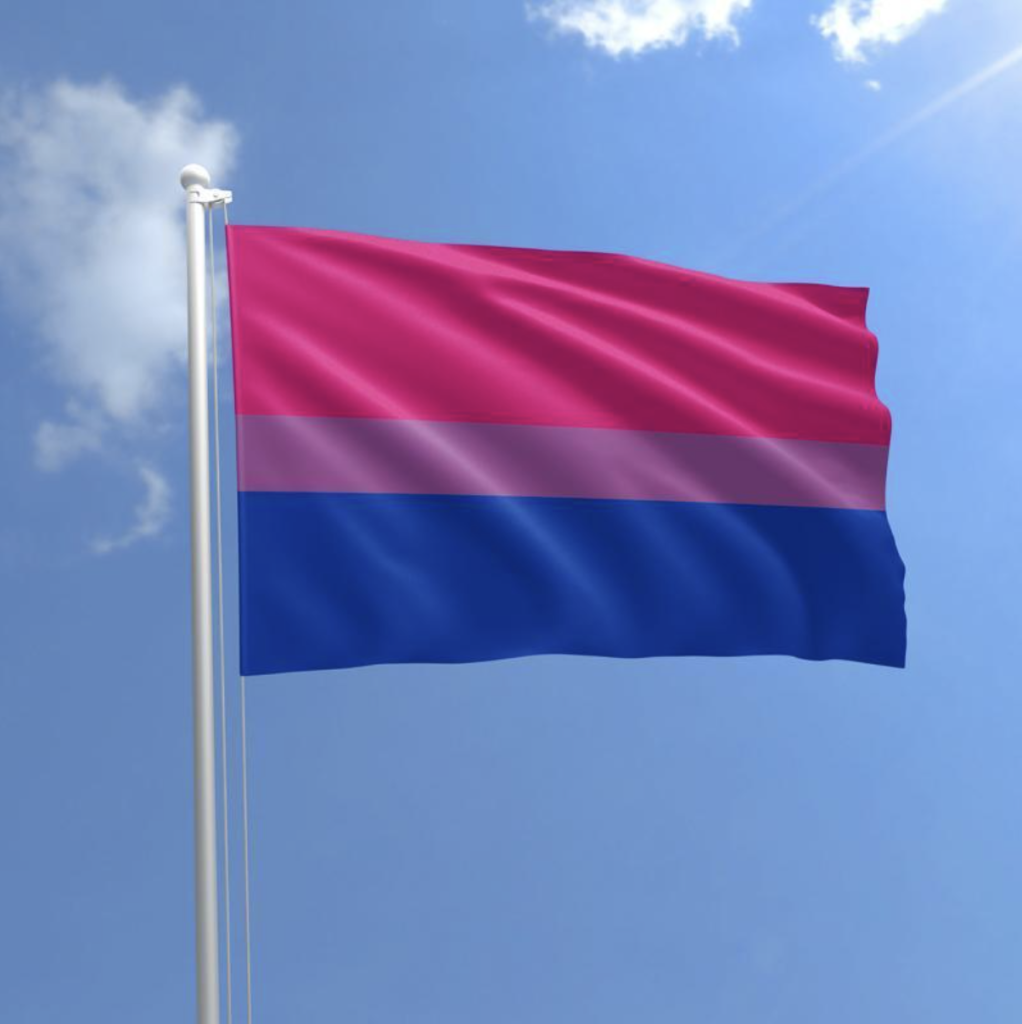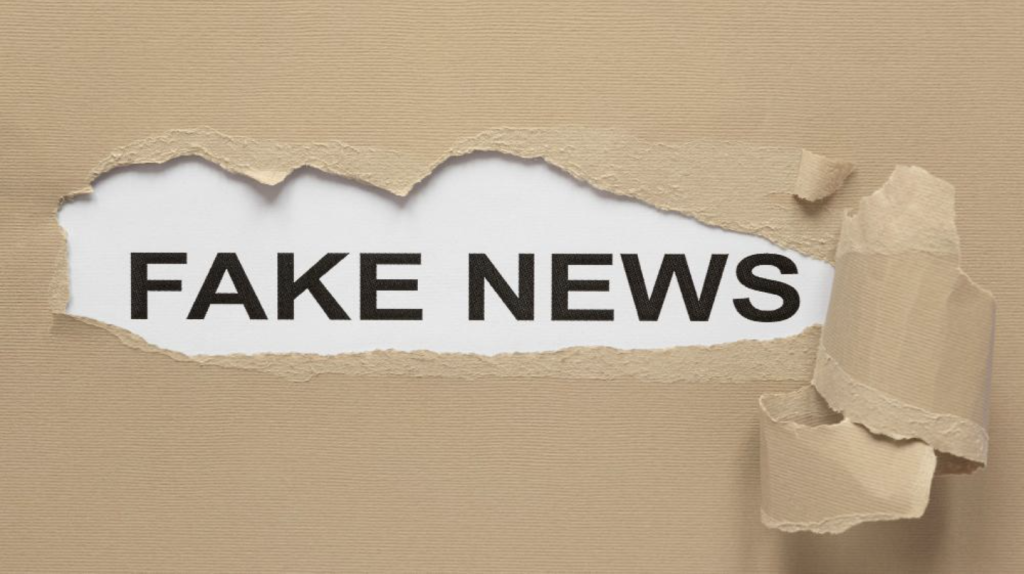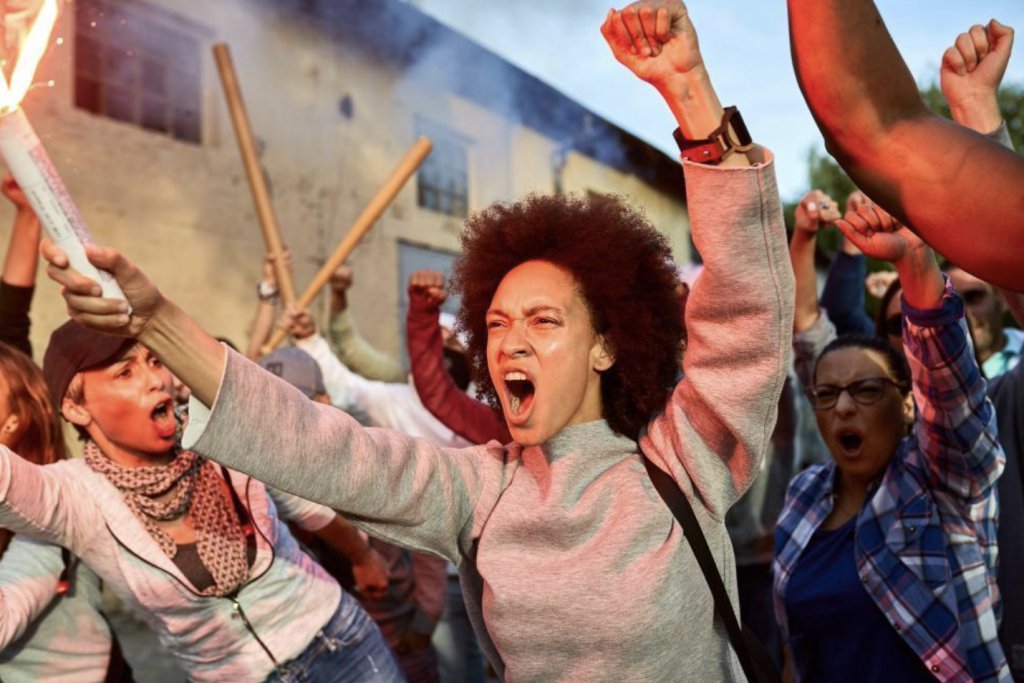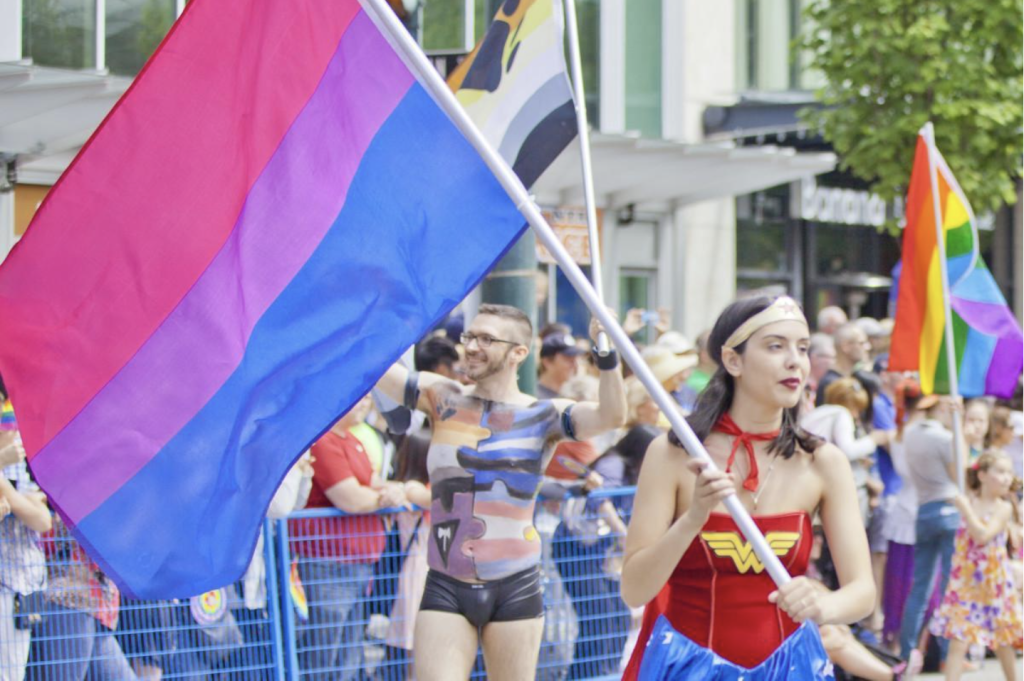
The LGBTQ+ community is filled with diverse identities and experiences, but one that often gets overlooked or misunderstood is bisexuality. For many bisexual individuals, their orientation is surrounded by myths and stereotypes that make it harder for them to be fully embraced and celebrated. The reality is that the bisexual experience is as varied and multifaceted as the people who identify with it.
It deserves recognition, understanding, and a space to share its unique stories. In this piece, we’ll dive into the complexities of bisexual identity, highlight the challenges faced, and emphasize the importance of fostering visibility and acceptance for this community.
Let’s dive into the beautiful world of bisexuality, focusing on the importance of visibility and the challenges faced by the bisexual community.
So, grab a cup of tea (or whatever your beverage of choice may be) and settle in for a deep dive!

Introduction: Understanding Bisexuality: Dispelling Common Myths.
Bisexuality is a sexual orientation where someone is attracted to more than one gender. This can be men, women, non-binary folks, or anyone on the gender spectrum. It’s important to remember that bisexuality is a spectrum itself; the intensity and nature of attraction can vary from person to person.
Now, before we delve deeper, let’s address some common myths surrounding bisexuality:
- Myth 1: Bisexuality does not exist. People who consider themselves bisexual are going through a phase, or are confused or undecided.
Reality: Bisexuality is a legitimate and long-term sexual orientation for many individuals. While some may go through a transitional period of bisexuality, for others, it remains a stable identity throughout their lives. - Myth 2: People who consider themselves bisexual are heterosexual and experimenting or trying to be trendy.
Reality: An individual’s sexual orientation is defined by how they identify themselves, not by external standards. Bisexuality is a genuine identity, not just a trend or phase. - Myth 3: People who consider themselves bisexual are lesbian/gay and haven’t fully accepted themselves or finished coming out. Reality: Bisexuality is a distinct sexual orientation separate from being gay or lesbian. Many bisexual individuals are fully out and comfortable with their identity.
- Myth 4: Bisexual individuals are characterized as self-centred, unethical, untrustworthy, excessively focused on physical pleasures, and lacking in moral fibre.
Reality: This myth reflects societal biases and discomfort surrounding sexuality and pleasure. It unfairly projects negative stereotypes onto bisexual individuals. - Myth 5: Bisexual means having concurrent lovers of both sexes.
Reality: Bisexuality is about attraction and capacity, not necessarily acting on those attractions. Bisexual individuals have varying sexual behaviours and relationship styles, just like any other orientation. - Myth 6: Bisexuals are promiscuous and cannot be monogamous or have traditionally committed relationships.
Reality: Bisexual individuals have a range of sexual behaviours, just like any other group. Promiscuity is not more prevalent among bisexuals, and many bisexuals are in monogamous, committed relationships. - Myth 7: There is a misconception that bisexual individuals are responsible for transmitting HIV/AIDS to the lesbian and heterosexual communities.
Reality: AIDS is contracted through unsafe sexual practices or exposure to contaminated blood, not by sexual orientation. This myth is used to discriminate against bisexuals unfairly. - Myth 8: Politically, bisexuals are traitors to the cause of lesbian/gay liberation and maintain heterosexual privilege.
Reality: Many bisexuals are actively involved in LGBTQ+ rights and advocacy, and their identity does not negate their commitment to the cause. - Myth 9: Bisexual women will always leave their lesbian lovers for men.
Reality: This is a harmful stereotype. Bisexual women, like any individual, may end relationships for various reasons, but their bisexuality does not inherently mean they will leave a partner for someone of a different gender. - Myth 10: Bisexuals get the best of both worlds and have a double chance for a date. Reality: Bisexuals often face discrimination and erasure from both heterosexual and LGBTQ+ communities, making dating and finding acceptance challenging.

The Importance of Bisexual Visibility in the LGBTQ+ Community.
Bisexual people are a significant part of the LGBTQ+ community, but they often face a unique challenge: bisexual erasure. This happens when someone’s bisexuality is invalidated or ignored. For example, a person might be told they’re “really gay” or “straight” based on their current partner.
Here’s why bisexual visibility is crucial:
- Representation matters. When bisexual people see themselves reflected in media and society, it affirms their identity and helps them feel less alone.
- Combating biphobia. Bisexual erasure fuels biphobia, prejudice, and discrimination against bisexual people. Increased visibility helps educate the wider community and create a more accepting environment.
- Empowering self-acceptance. Visibility encourages bisexual individuals to embrace their authentic selves, fostering self-love and confidence.

The Struggle for Recognition: The Bisexual Erasure.
What is bisexual erasure, and why does it matter?
Bisexual erasure is the tendency to ignore, invalidate, or deny the existence of bisexuality as a legitimate sexual orientation. This phenomenon can manifest in various forms, such as excluding bisexual individuals from LGBTQ+ spaces, portraying bisexuality as a phase or transition, or assuming that bisexual people in relationships are either gay or straight.
Bisexual erasure has far-reaching consequences, including the marginalization of bisexual individuals within their communities, the perpetuation of harmful stereotypes, and negative impacts on mental health and well-being.
Bisexual erasure takes many forms:
- The “in-between” stereotype: Bisexual people are seen as not fully belonging to the LGBTQ+ community or straight society. This creates a sense of isolation and invalidation.
- The “fetishization” trope: Bisexual people, particularly women, might be seen as more sexually available or “exotic” due to their orientation. This objectifies them and undermines their emotional needs.
- The “not a real thing” narrative: Some people deny the existence of bisexuality altogether. This can be incredibly hurtful and invalidating.
The “Fickle” or “Confused” Stereotype
This stereotype assumes bisexuality is a sign of indecisiveness or inability to commit. It ignores the complexity of human attraction and reduces bisexuality to a fleeting feeling. Bisexual people can be just as capable of forming deep and meaningful relationships as anyone else.
The “Just a Phase” Myth
The idea that bisexuality is a temporary phase on the way to being gay or straight is simply untrue. Bisexuality is a valid and stable sexual orientation.
Bi-Invisibility in Media and Representation
Bisexual characters are often poorly portrayed in movies and TV shows. They might be hyper-sexualized, portrayed as confused, or their bisexuality might be completely ignored. This lack of positive representation contributes to bisexual erasure and undermines the experiences of real bisexual people.
Impact of Bisexual Erasure on Mental Health and Well-being
Bisexual erasure can have profound impacts on the mental health and well-being of bisexual individuals. The constant invalidation of their identities, the lack of representation, and the perpetuation of harmful stereotypes can lead to increased levels of anxiety, depression, and internalized biphobia. Additionally, bisexual individuals may face unique challenges in accessing support networks and resources tailored to their specific needs.
Furthermore, bisexual erasure is a form of stigma, and stigma can have detrimental effects on both mental and physical health. Some evidence suggests that bisexual people have higher rates of anxiety and depression than straight, lesbian, or gay individuals and bisexual erasure is a critical potential contributor to these mental health disparities. Addressing bisexual erasure may help many bisexual people experience less isolation, potentially lowering the incidence of mental health issues.
Physical Health Consequences
Compared to straight people, bisexual and LGBTQ+ individuals as a whole are more likely to experience adverse health outcomes, such as increased cardiovascular risk factors due to stress, smoking, and being overweight or obese. Bisexual individuals may face these disparities due to a lack of quality preventative care. For instance, bisexual women receive routine health care less frequently than other women, including breast, colorectal, and cervical cancer screening tests.
Furthermore, health disparities become increasingly layered for transgender people and people of colour who identify as bisexual, as they potentially have to navigate additional challenges such as transphobia or racism.
Bisexual erasure contributes to these health disparities by perpetuating stigma, lack of support, and a lack of tailored resources and healthcare access for bisexual individuals. Addressing bisexual erasure and promoting visibility, understanding, and inclusivity can help mitigate these negative health outcomes and ensure that bisexual individuals receive the support and care they need.

Celebrating Bisexual Pride and Identity.
A Brief History of Bisexuality.
Though the term “bisexuality” is relatively modern, evidence of bisexual behaviour and relationships can be found throughout ancient history and across cultures. In ancient Greece and Rome, same-sex relations between men were accepted as long as they took an active role. Chinese literature also contains references to female same-sex relationships.
The modern concept of bisexuality began taking shape in the 19th century through the interconnected fields of biology, psychology, and sexuality studies. In 1892, the term “bisexual” was first used in its current meaning in Charles Gilbert Chaddock’s translation of Krafft-Ebing’s Psychopathia Sexualis.
Sigmund Freud’s 1905 theory of psychosexual development posited that all humans are innately bisexual at birth. His ideas, though controversial, brought more awareness to the concept of bisexuality. In 1948, Alfred Kinsey’s famous sex research shaped the popular understanding of bisexuality as encompassing a spectrum of sexual attraction to males and females.
The 1960s saw the rise of LGBTQ political activism and rights movements, with bisexual people
like Brenda Howard playing key roles. Groups specifically for bisexuals began emerging in the 1970s. The 1990s brought more academic study, activism, and cultural visibility around bisexuality through events like Bisexual Pride Day.
Though often marginalized historically, the bisexual community has worked to achieve greater recognition, representation, and understanding of bisexuality as a legitimate sexual orientation in modern times.
September celebrates Bisexual Visibility Day (September 23rd) and Bisexuality Awareness Week (leading up to the 23rd). These events are crucial for raising awareness and creating a more inclusive world for bi people.

Ways to Celebrate Bisexual Visibility.
- Educate yourself: Learn about the experiences of bisexual people by reading books, and articles, and watching documentaries created by bi voices. Check out the resources at the end of this blog!
- Support Bi+ creators: Amplify the voices of bi artists, musicians, writers, and filmmakers.
- Use inclusive language: Respect people’s pronouns and avoid assuming someone’s sexuality based on their partner.
- Challenge biphobic stereotypes: When you hear someone make negative comments about bisexuality, politely correct them and share accurate information.
- Celebrate Bisexual Visibility Day and Month: Attend local events, wear the bisexual pride flag (purple, blue, and pink), or share messages of support on social media.
Creating Inclusive Spaces for Bisexual People.
Here’s how to create a space where bisexual people feel welcome and respected:
- Trust individuals when they disclose their sexual orientation to you. Don’t pressure them to explain or justify their identity.
- Avoid biphobic jokes or comments. Humour that relies on stereotypes can be hurtful.
- Use gender-neutral language when appropriate. This avoids reinforcing gender binaries that might exclude bi people attracted to non-binary folks.
- Offer support and resources. Let bi people know you’re an ally and a safe space for them to discuss their experiences.
Using Bi+ Terminology and Pronouns Correctly
Language is powerful! Here are some tips for using bi+ terminology accurately:
- Bi+: This is an inclusive term encompassing bisexual, pansexual, and other identities under the bisexual umbrella.
- Respect pronouns: Always ask someone for their pronouns and use them consistently.
- Don’t assume someone’s sexuality based on their appearance or partner. Let them define themselves.
Supporting Bi+ Voices and Creators
There are countless talented bi+ creators out there! Here are some ways to find and support them:
- Follow LGBTQ+ organizations and publications on social media.
- Search online for bi+ artists, writers, and filmmakers.
- Attend LGBTQ+ events and festivals.
- Look for the “Bisexual+” category on music and streaming platforms.

Beyond the Bi Flag: Exploring the Spectrum of Bisexual Identities.
Understanding the Fluidity of Bisexual Attraction.
Bisexual attraction can be fluid, meaning it can change over time. Someone might primarily be attracted to one gender but occasionally feel attracted to another. There’s no “right” way to be bisexual.
Demystifying Labels: Pansexuality, Demisexuality, and the Bisexual Umbrella
Many identities fall under the bisexual umbrella, reflecting the diverse ways people experience attraction:
- Pansexuality: describes attraction to people regardless of gender identity. Pansexual people may or may not identify as bisexual.
- Demisexuality: describes only experiencing sexual attraction after forming a strong
emotional bond with someone. Demisexual people can be attracted to any gender. These are just a few examples. Remember, labels are tools for self-discovery, not rigid categories.
The Importance of Self-Discovery and Authentic Expression
There’s no pressure to conform to a specific label. The most important thing is to be authentic to yourself. Explore different terms and see what feels right.
Conclusion: Moving Towards a More Inclusive World for Bisexual People
Bisexual people are an integral part of the LGBTQ+ community. Let’s continue to celebrate their identities, challenge biphobia, and create a world where everyone feels safe and empowered to be themselves.
Resources for Bisexual Individuals and Allies (Call to Action)
This is just the beginning of your journey towards understanding bisexuality! You can make use of the resources below for more knowledge.
- The Trevor Project: (Provides crisis intervention and suicide prevention services to LGBTQ+ youth)
- GLAAD: (Works to ensure accurate representation of LGBTQ+ people in media)
- BiNet USA: (Promotes bisexuality awareness and provides resources for bisexual individuals)Remember, allyship is a continuous process. By educating ourselves and supporting bi+ voices, we can build a more inclusive world for everyone. Let’s celebrate bisexuality in all its beautiful complexity!

